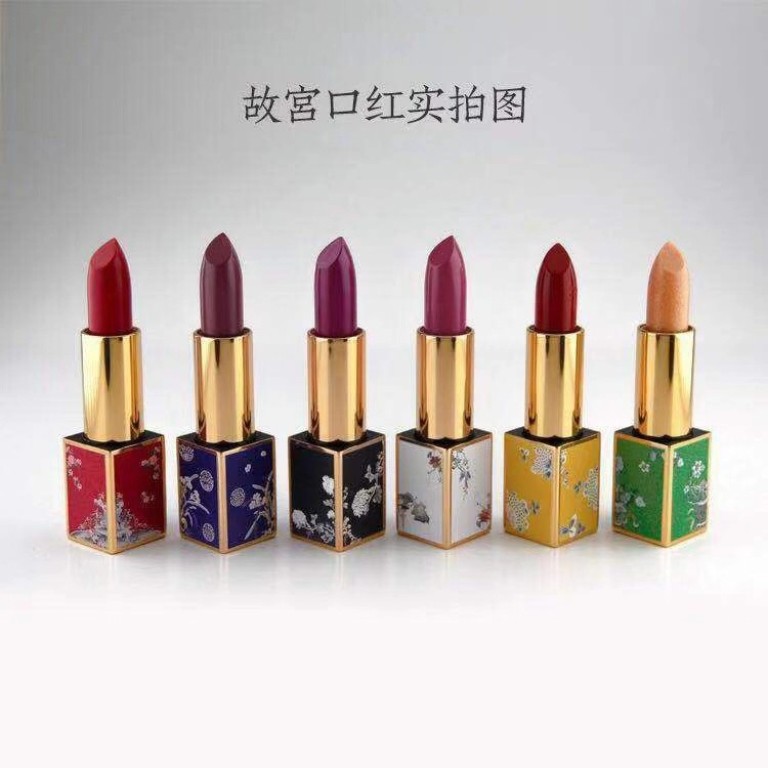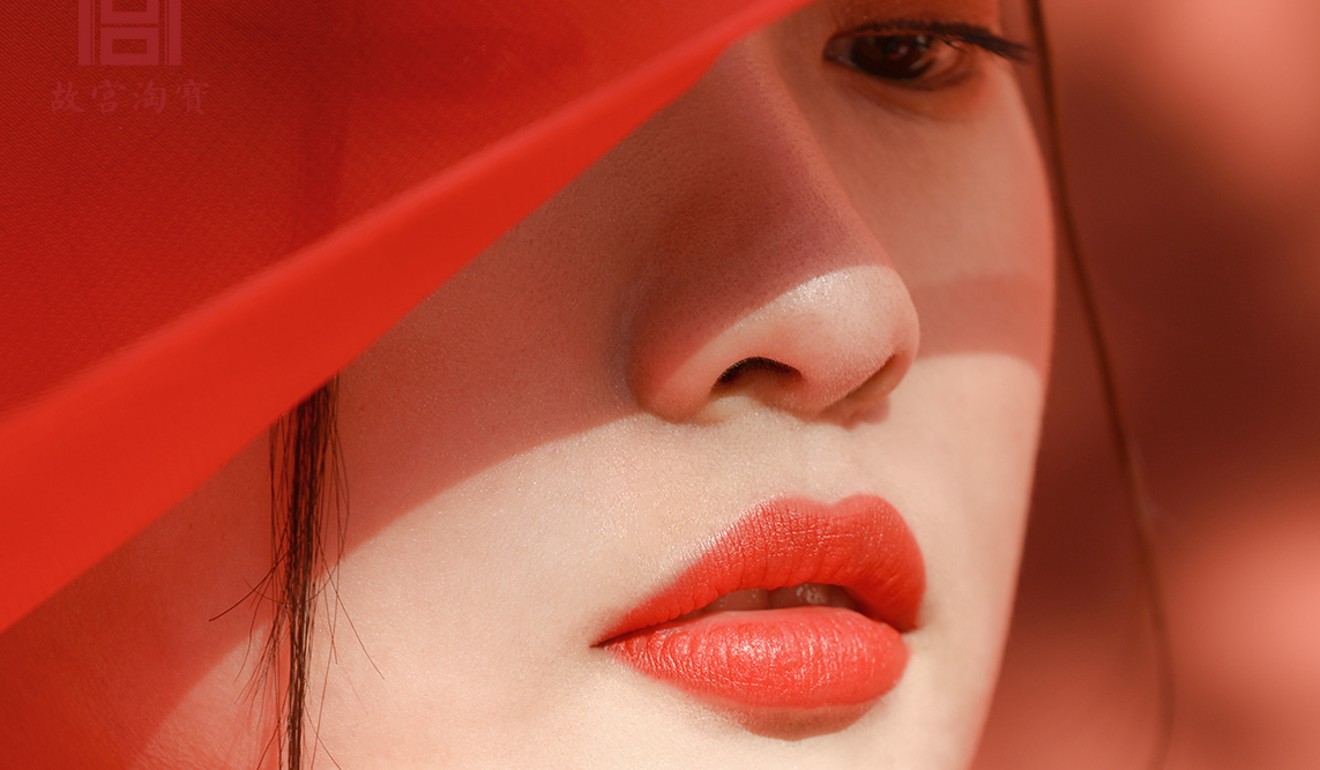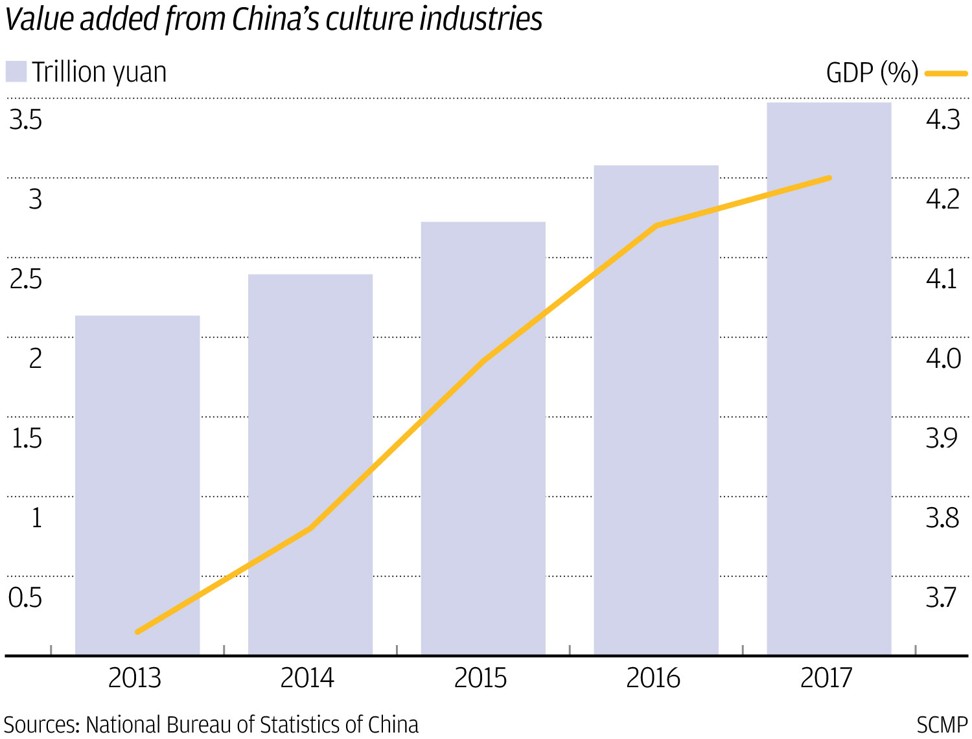
Lipsticks with a cultural twist help Beijing’s Forbidden City woo young Chinese consumers
- Online buyers snapped up more than 100,000 lipsticks developed by the Palace Museum within four days of their launch earlier this month
- New cosmetics ranges feature packaging inspired by the Ming and Qing dynasties
But this shrine to the past is rapidly becoming a very modern fashion phenomenon thanks to a new range of beauty products that have proved a massive hit with young Chinese women.
Online buyers snapped up more than 100,000 lipsticks developed by the Palace Museum within four days of their launch earlier this month, helping to turn the historic landmark into a trendy consumer brand.
What captured their hearts was the lipstick’s elegant packaging inspired by the national treasures on display in the museum – the lipstick tube bears patterns such as royal embroideries, antique furniture and fairy cranes – heavenly birds symbolising longevity.
Lizzy Wong, a 24-year-old from the southern metropolis of Guangzhou, is one of millions of loyal new fans of the Palace Museum.

“I bought them mainly for the beautiful cases. Their functionality doesn’t really matter to me,” Wong said. “We girls just can’t resist the charm of pretty designs.”
For several years, the former imperial palace has attracted something of a cult following by developing and selling its own original products, from Chinese-style paper tapes to modern essentials like phone cases, with designs or branding inspired by the past.
Before cosmetics, the Palace Museum found success with products which usually added a humorous twist to the serious traditional culture.
For example, a traditional paper fan emblazoned with the calligraphy of Emperor Yongzheng of the Qing dynasty, which roughly translates into “I miss you too”, was a hit.
Sales revenue from the products reached 1 billion yuan (US$145 million) in 2016, according to Shan Jixiang, the head of the museum.
The museum has also produced several popular TV shows and documentaries that showcase the national treasures and the work to protect them in a relatable way.
But its recent move into selling its own branded cosmetics has taken it to a new level. They have proved so popular that some customers buying products now will have to wait until April to have their purchases delivered.
“There is great pride in local, home-grown brands now and they have gained stronger traction than imported goods,” said Tiffany Lung, an analyst at retail innovation and technology company Tofugear.
The Palace Museum’s commercial success highlights a lack of innovative cultural products in China and an enormous, unsated domestic demand for them.
On the global scale it is easily outshone by other regions. While the US and Europe occupied about three quarters of the global cultural innovation industry, China made up less than 4 per cent of it, according to online consultancy Chyxx.com
The Palace Museum has cleverly latched onto a fast-expanding beauty products market in China, which grew 11 per cent to 32 billion yuan (US$4.6 billion) last year, according to market research provider Euromonitor International.
Before the products were available, Wong used to wrap her Dior lipstick and SK-II essence bottle with patterned paper tapes from the Palace Museum to create her own Chinese-style packaging.
International brands in the past have tried to seize a share of the market by offering Chinese special editions featuring elements such as dragons and zodiac animals, but many have failed to resonate with younger consumers, Tofugear’s Lung said.
“There is a cultural relevance behind the [Palace Museum’s] packing design. It’s not simply for aesthetic purpose, there is a story behind the historical heritage,” Lung said.
The Palace Museum collaborated with Beijing-based Bloomage Biotechnology to design and produce some of the make-up products.
“The essence of the Palace Museum’s products lies in the traditional Chinese culture, instead of simple appropriation of elements and symbols,” said a spokesman for Bloomage.

In fact, it mainly used to sell standard antique replicas that were outsourced to external manufacturers, according to Shan.
It wasn’t until 2012 that it started to design products that incorporate culture into every day products.
“We’ve made great efforts in the past five years,” Shan said in a speech at a university in April.
The museum had developed around 10,500 original products by the end of last year, he said.
Veronica Wang, associate partner at OC&C Strategy Consultants, which specialises in consumer goods, said the Palace Museum has turned itself into something more than a brand.
“Young consumers are seeking things that are different and new. The Forbidden City captured this need,” Wang said.
The success of the make-up range hasn’t been without challenges. The museum has two online outlets, the Palace Museum Cultural and Creative Store – which is accessed via WeChat and the Palace Museum’s Taobao store, and this has caused some confusion.
The two stores are managed independently by different departments of the museum.
They launched separate cosmetics lines just two days apart, leaving many customers wondering if one or other of them was fake.
Four entries can be found on the museum’s official website that direct users to various production lines operated on different Chinese social media and e-commerce platforms.
“The brand management is a bit messy,” said Cao Lei, director of China E-commerce Research Center.
The two shops are not competitors because they target different kinds of customers, Cao said.
The Taobao store develops more cute and funny products, while the other shop has a more serious ethos.
Neither store immediately responded to requests for comment.
“Better communication and alignment of product launches would definitely help,” said Lung.
The Palace Museum’s brand management was chaotic and would benefit from marketing and brand professionals, said Shaun Rein, the managing director of China Market Research Group.
“When you think of The Metropolitan Museum of Art [in New York], you know that the quality will be pretty good and authentic. But when it comes to the Forbidden City, we really don’t know what the position is,” he added.
Analysts also worry about whether the Palace Museum can replicate its past successes in the future.
“The sustainability of this success will depend on their products and capability to continually innovate,” said Wang.



